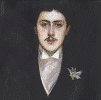Modern Languages and Literatures, Department of
Date of this Version
2019
Citation
Published in Art from Trauma: Genocide and Healing Beyond Rwanda, ed. Rangira Béa Gallimore & Gerise Herndon. University of Nebraska Press, Lincoln, 2019.
Abstract
In 1994 Rwanda was the scene of genocide, or, more precisely in French, it was Ie theatre dugenocide (theater of genocide). Perpetrators and victims played their role while the rest of the world watched the "spectacle" live on television. Perhaps because of its spectacular aspect, the Rwandan genocide has inspired a number of artistic materials. In the last decade we have indeed witnessed the growth of literary and artistic expression in relation to the Rwandan genocide. Survivors and witnesses have told their stories in books and songs. Journalists, as well as other travelers "to the end of Rwanda," to use Veronique Tadjo's words, have borne witness to the genocide. Artists who were not there have also attempted to represent the "African genocide" and have cast themselves as participating in the process of reconciliation. I am referring in particular to the African writers who published their work in the context of Rwanda: Devoir de memoire (Rwanda: Duty to Remember), a project in which prominent writers were asked to visit Rwanda and "remain in-residence" with the expectation that they would write to generate creative responses to the genocide. At most, however, participants acknowledged these written texts had a limited audience in Rwanda. Rwanda is a primarily oral society. As a result, most people traditionally do not seek or receive written information. After publication of the texts, several excerpts were adapted to the stage in Rwanda by Koulsy Lamko, a Chadian dramatist. Is there a body of artistic work we can refer to as theater of the Rwandan genocide? If so, what would be its role?
Included in
Africana Studies Commons, Political Science Commons, Theatre and Performance Studies Commons


Comments
Copyright © 2019 Board of Regents of the University of Nebraska.